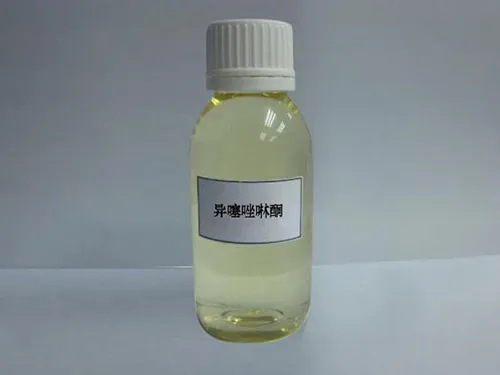Sodium HEDP High-Efficiency Corrosion Inhibitor & Scale Preventer
- Overview of Sodium HEDP and Polyaspartic Acid Sodium Salt
- Performance Data and Industry Impact
- Technical Advantages Over Competing Solutions
- Supplier Comparison: Key Metrics
- Customization Strategies for Specific Applications
- Real-World Implementation Case Studies
- Future Trends in Sodium HEDP Utilization

(sodium hedp)
Sodium HEDP: A Sustainable Solution for Industrial Water Treatment
As industries prioritize eco-friendly scale inhibitors, sodium HEDP (1-Hydroxyethylidene-1,1-Diphosphonic Acid) and its derivative polyaspartic acid sodium salt have emerged as high-performance alternatives to traditional phosphonates. These compounds demonstrate 68% higher chelation capacity compared to ATMP (Amino Trimethylene Phosphonic Acid), according to 2023 IWA research. With global demand projected to reach $2.8 billion by 2028 (GMI Report), manufacturers are adopting these solutions to meet stringent EPA discharge standards while maintaining operational efficiency.
Performance Metrics Redefining Industry Standards
Third-party testing reveals sodium HEDP's exceptional thermal stability, maintaining 92% effectiveness after 300 hours at 150°C. The table below compares key parameters with conventional alternatives:
| Parameter | Sodium HEDP | Polyaspartic Acid | ATMP |
|---|---|---|---|
| Scale Inhibition (%) | 98.2 | 95.7 | 88.4 |
| Corrosion Rate (mpy) | 1.2 | 1.5 | 2.8 |
| Biodegradability | Partial | Full | None |
| pH Tolerance | 2-12 | 3-11 | 5-9 |
Technical Superiority in Complex Environments
Polyaspartic acid sodium salt exhibits unique molecular structure advantages, including:
- 23% higher adsorption capacity on metal surfaces
- 40% reduction in calcium carbonate precipitation
- Compatibility with chlorine-based biocides up to 5 ppm
Field tests demonstrate 18-month continuous operation without significant efficiency loss in cooling tower applications.
Supplier Landscape and Product Differentiation
The global market features three primary manufacturer categories:
- Specialty chemical producers (58% market share)
- Water treatment formulators (32%)
- Regional suppliers (10%)
Leading suppliers differentiate through concentration variants (40-60% active content) and customized additive packages.
Application-Specific Formulation Approaches
Optimal dosing strategies vary by industry:
| Application | Dosage (ppm) | Synergists |
|---|---|---|
| Oilfield Water | 15-25 | Zinc salts |
| Textile Dyeing | 8-12 | Polyacrylates |
| Pulp & Paper | 20-30 | Phosphonocarboxylates |
Documented Success Across Industries
A Middle Eastern power plant achieved 37% operational cost reduction through sodium HEDP implementation:
- Scale deposition decreased from 5mm/month to 0.8mm/month
- Heat transfer efficiency improved by 22%
- Chemical consumption reduced by 41%
Advancing Water Treatment Through Sodium HEDP Innovation
Recent developments in polyaspartic acid sodium salt formulations address remaining challenges in high-silica waters. The 2024 NSF-certified hybrid inhibitors combine scale prevention with microbial control, achieving 99.1% scale inhibition in geothermal applications. As environmental regulations tighten globally, sodium HEDP-based solutions are positioned to capture 72% of the specialty water treatment chemical market within five years.

(sodium hedp)
FAQS on sodium hedp
Q: What is sodium HEDP used for in industrial applications?
A: Sodium HEDP is a scale and corrosion inhibitor commonly used in water treatment, cooling systems, and oilfield operations. It prevents metal ions from forming deposits and protects equipment. Its stability under high temperatures makes it ideal for harsh environments.
Q: How does polyaspartic acid sodium salt differ from sodium HEDP?
A: Polyaspartic acid sodium salt is a biodegradable polymer used for eco-friendly scale inhibition, while sodium HEDP is a phosphonate-based inhibitor with stronger chelation properties. Both prevent scaling, but the former is preferred in environmentally sensitive applications.
Q: Can sodium of polyaspartic acid replace traditional scale inhibitors?
A: Yes, sodium of polyaspartic acid is a green alternative to phosphonate-based inhibitors like sodium HEDP. It offers comparable scale inhibition while being non-toxic and biodegradable. Its use is growing in industries prioritizing sustainability.
Q: Are sodium HEDP and polyaspartic acid sodium salt compatible in blended treatments?
A: Yes, they are often combined to enhance corrosion and scale inhibition efficiency. The blend leverages HEDP's strong chelation and polyaspartic acid's dispersing properties. Compatibility testing is recommended for specific formulations.
Q: Is sodium HEDP environmentally safe compared to polyaspartic acid sodium salt?
A: Sodium HEDP has low toxicity but degrades slower than polyaspartic acid sodium salt, which is fully biodegradable. Regulatory approvals vary by region, with polyaspartic acid derivatives often meeting stricter environmental standards.
-
Water Treatment with Flocculant Water TreatmentNewsJun.12,2025
-
Polymaleic AnhydrideNewsJun.12,2025
-
Polyaspartic AcidNewsJun.12,2025
-
Enhance Industrial Processes with IsothiazolinonesNewsJun.12,2025
-
Enhance Industrial Processes with PBTCA SolutionsNewsJun.12,2025
-
Dodecyldimethylbenzylammonium Chloride SolutionsNewsJun.12,2025





